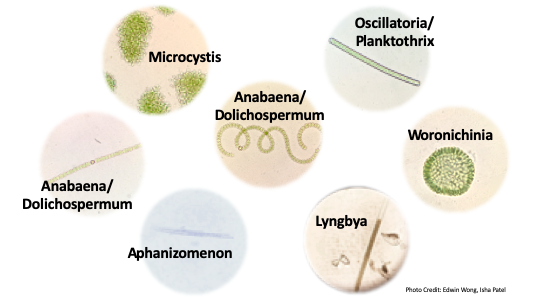Cyanobacteria
Cyanobacteria (aka “blue-green algae”) are not plant algae, but true bacteria. As photosynthetic bacteria, they are believed to have helped produce the first oxygen atmosphere on Earth and may be progenitors of chloroplasts in plant cells (endosymbiotic theory). Cyanobacteria play an important role in the carbon and nitrogen cycles of the planet, and some species have found a following as neutraceuticals (e.g. Spirulina). Despite these benefits, some species possess the genetic capability to produce metabolites that are toxic to animals (i.e. cyanotoxins).

The Wong Lab at Western Connecticut State University (WCSU) operates a program to monitor and study cyanobacteria in regional waterways. Water samples are collected and analyzed for the following: (a) water parameters such as temperature, pH, and conductivity; (b) nutrients such as total nitrogen and phosphorus; (c) classification of genera by photomicroscopy; (d) qPCR quantitation of genes for phycocyanin and cyanotoxin genes (anaC, mcyD, sxtA); (e) fluorometric determination of biovolume; (f) ELISA assays for cyanotoxin concentration (microcystin, saxitoxin).
Go to Microcystin ELISA assay data.